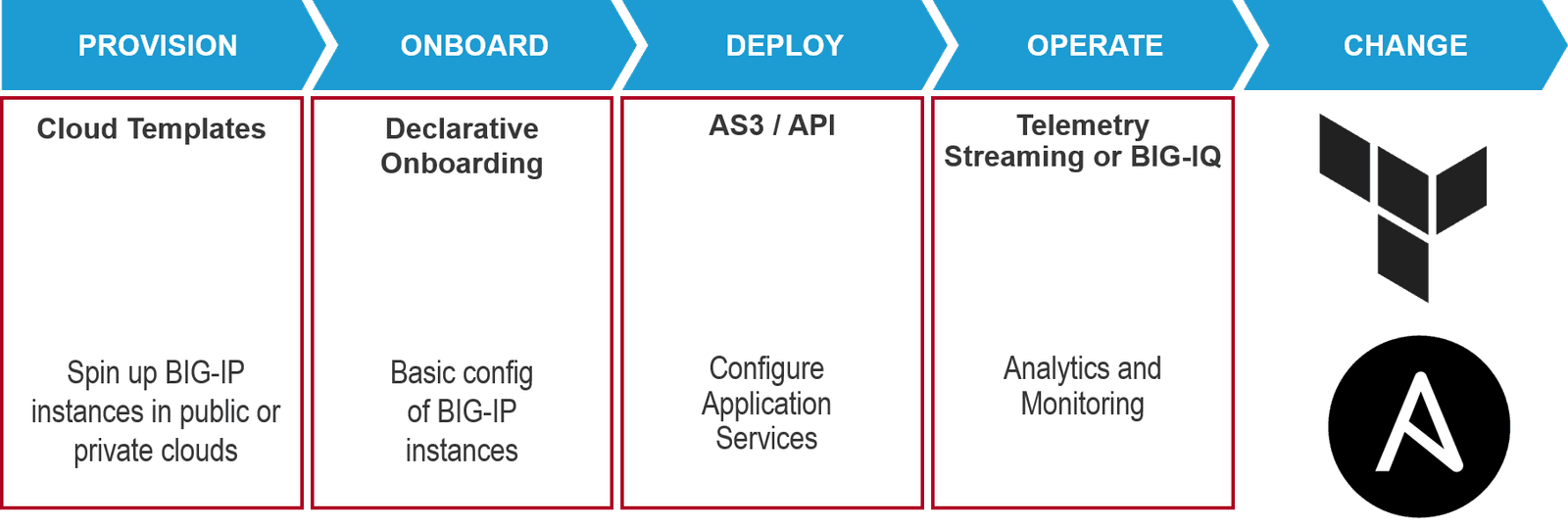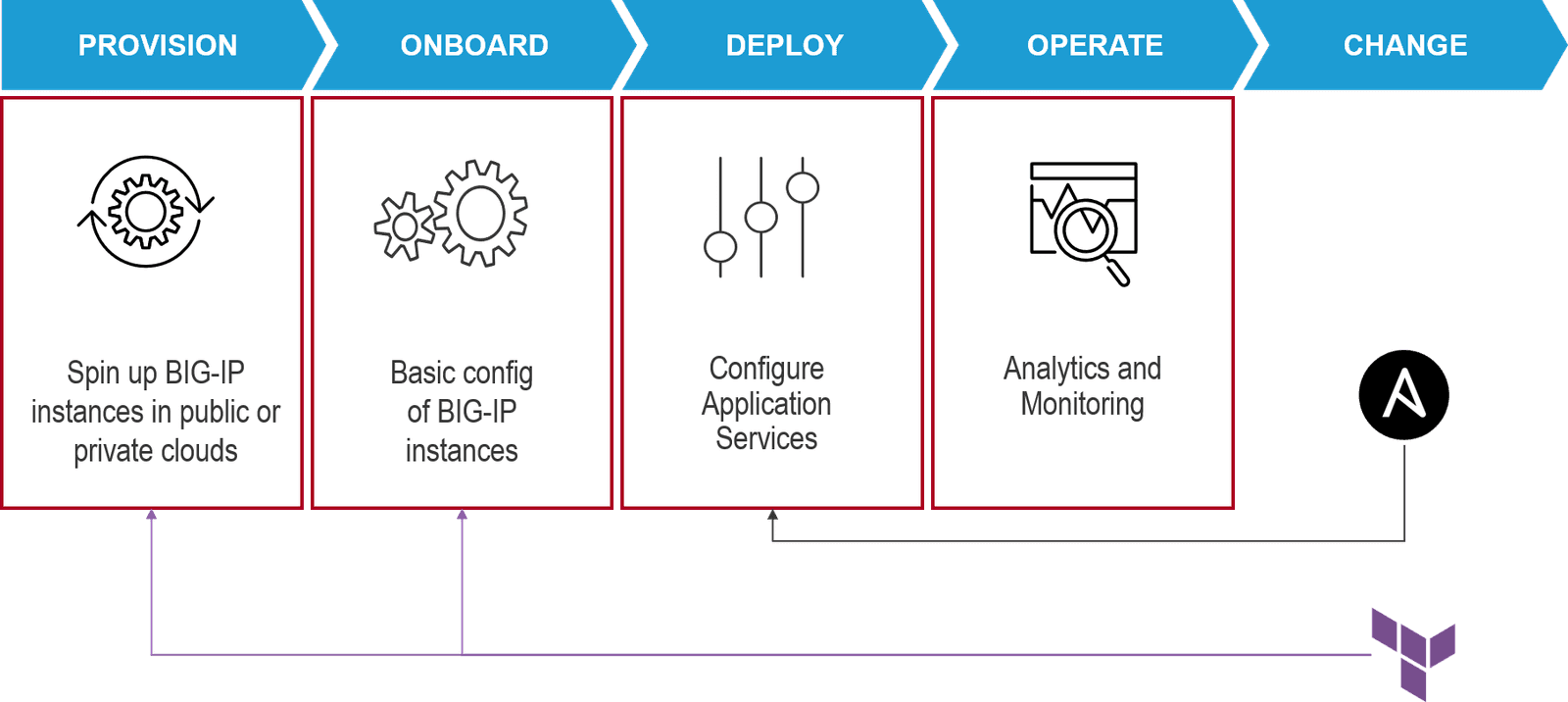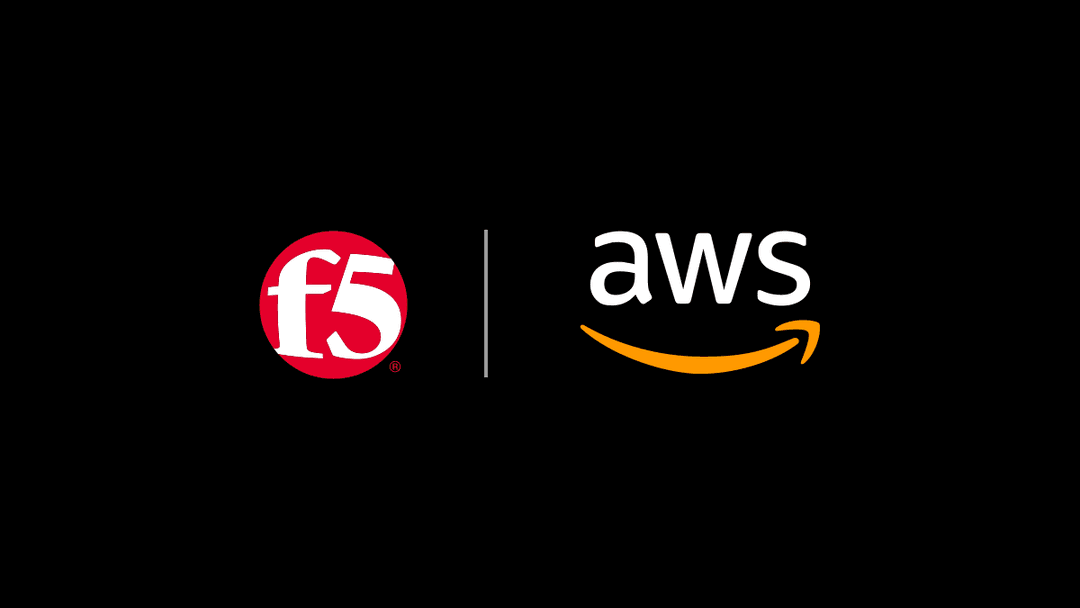Choose one or the other - or both - to deploy and operate F5 Application Services.
The open source movement has always focused on freedom. The freedom to choose the solution that works best for you given skills, budgets, architecture, and goals. That principle continues to be a significant factor today when it comes to building repeatable infrastructure for the deployment pipeline.
There are a lot of great options out there for automating the provisioning and operation of application services. Two of the more popular choices are RedHat Ansible and HashiCorp Terraform.
Let me stop here and mention that F5 fully supports Ansible and Terraform. We work with both to ensure interoperability and integration, so you don't have to. No matter your choice, we've got your back.
But we have noted during customer engagements that for some tasks, Ansible excels while at others, it's Terraform that shines. That's because automating - and maintaining - a pipeline require different sets of tasks.
Terraform excels at orchestration - the management of the state of an environment. What that means is that Terraform understands what an environment should look like and how it should behave. If something isn’t right, Terraform can flag it for review.
Ansible excels at configuration management. That means its focus is on maintaining the state of individual components. If there's a problem with an individual component in the environment, Ansible can adjust the configuration to address the problem.
The different focus of each tool means it's not a surprise when we see them used together to automate the deployment lifecycle.
To see how these two tools work with F5 Application Services, it's a good idea to set common ground with a view of the deployment lifecycle:

Just as there's a lifecycle for applications with a corresponding delivery pipeline, there's a lifecycle for application services with a corresponding deployment pipeline. That lifecycle requires multiple steps:
- Provision
a. Provisioning is the process of actually spinning up an instance - whether a virtual machine or container, whether in a public or private cloud. - Onboard
a. Onboarding is necessary to setup the networking required to operate in the environment in which BIG-IP has been deployed. - Deploy
a. During the deploy phase of the lifecycle, an application service is defined, configured, and launched. - Operate
a. Ongoing operations require monitoring and analytics. F5 Telemetry Streaming enables BIG-IP to plug-in to telemetry pipelines to share desired metrics and data. - Change
a. Change is the process of modifying existing configurations (specified initially during the deploy phase).
Both Ansible and Terraform can be the primary automation provider for all five phases. However, each excels at different phases and thus using both can actually be a better strategy. We are more likely to see Ansible used for the deploy and change (configuration management) phases while Terraform is more often used to provision and onboard (orchestration).

We also know that many customers want to standardize their toolchains - for good reason. Maintaining expertise in multiple tools can be difficult - not to mention operating and maintaining the infrastructure necessary to run multiple toolchains. In that case, there are ways to choose which one of these awesome tools to standardize on.
- Infrequent changes to infrastructure
In this scenario, you're making changes to application services but not necessarily to the infrastructure, i.e. BIG-IP. This is often the case when taking advantage of an existing BIG-IP to deploy new applications. Ansible is a good choice here as it excels at configuration management and that's primarily what you'll be doing. Ansible supports a wide range of languages and API styles, making it a great fit for both DevOps and NetOps teams to make changes to application services. You can use Ansible to configure F5 Application Services via F5 Ansible modules or via F5 AS3. Or you can use both depending on your specific needs. For a deeper dive on how to choose your Ansible approach, check out this great blog from Mani Gadde and Andrius Benokraitis. - Frequent changes to infrastructure
Cloud - particularly public cloud - is often chosen to facilitate a high rate of changes in applications and their supporting infrastructure. Immutable infrastructure often aids in managing volatility in this situation, i.e. tearing down and redeploying an entire infrastructure. Terraform is a great choice for this scenario as it excels at provisioning and onboarding entire infrastructures with alacrity. Its design and focus on orchestration is a good fit for creating consistent, repeatable infrastructures at scale, especially in volatile environments like that of cloud. - Frequent change to the infrastructure and application services
Terraform + Ansible can be great combination for managing high rates of change across both infrastructure and application services. Because you're expecting frequent changes to the state of the environment and individual components, you'll want both change management and orchestration tools to help maintain the availability of applications and their supporting application services
No matter what you choose - Ansible, Terraform, or both - F5 is committed to supporting your choice with native integrations and prepackaged templates along with a community actively contributing and refining both.
About the Author

Related Blog Posts

Build a quantum-safe backbone for AI with F5 and NetApp
By deploying F5 and NetApp solutions, enterprises can meet the demands of AI workloads, while preparing for a quantum future.

F5 ADSP Partner Program streamlines adoption of F5 platform
The new F5 ADSP Partner Program creates a dynamic ecosystem that drives growth and success for our partners and customers.

Accelerate Kubernetes and AI workloads with F5 BIG-IP and AWS EKS
The F5 BIG-IP Next for Kubernetes software will soon be available in AWS Marketplace to accelerate managed Kubernetes performance on AWS EKS.
F5 NGINX Gateway Fabric is a certified solution for Red Hat OpenShift
F5 collaborates with Red Hat to deliver a solution that combines the high-performance app delivery of F5 NGINX with Red Hat OpenShift’s enterprise Kubernetes capabilities.
F5 Silverline Mitigates Record-Breaking DDoS Attacks
Malicious attacks are increasing in scale and complexity, threatening to overwhelm and breach the internal resources of businesses globally. Often, these attacks combine high-volume traffic with stealthy, low-and-slow, application-targeted attack techniques, powered by either automated botnets or human-driven tools.
Phishing Attacks Soar 220% During COVID-19 Peak as Cybercriminal Opportunism Intensifies
David Warburton, author of the F5 Labs 2020 Phishing and Fraud Report, describes how fraudsters are adapting to the pandemic and maps out the trends ahead in this video, with summary comments.
